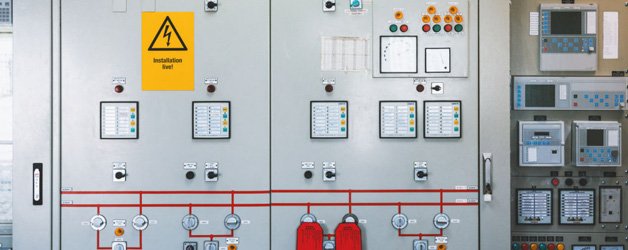Electricity is essential in today’s world. In industrial and commercial environments, where personnel rely on the power to accomplish their jobs correctly and securely on a regular basis, a robust, reliable electrical connection is more important than ever.
Building systems require electrical enclosures in addition to the physical wire that supplies electrical currents in order to maintain proper operating conditions for the system. Enclosures must frequently be custom constructed since the electrical system for each structure is dependent on the amount of energy required.
In this article, we’ll go over seven of the most important factors to consider when designing an electrical enclosure.

-
Type
Electrical enclosures come in a variety of shapes and sizes, each designed to accommodate systems with distinct requirements. Servers, for example, are usually housed in huge, free-standing enclosures, whereas domestic electrical enclosures can be placed on the wall.
Most electrical enclosures in industrial and commercial environments are free-standing, wall-mounted, or equipment-mounted. Equipment-mounted enclosures, as the name implies, are built onto the frame of a machine to save space in a facility.
The sort of enclosure you pick is generally determined by the following two factors: location and layout.
-
Location
Electrical enclosures, like any other critical building component, must be installed in places that fulfil specified standards. Because these environmental conditions can impact the overall operation of the electrical system, your enclosure should be placed in an area with a reasonably consistent temperature, light level, and moisture level.
You may also have to pick your position based on the size of the electrical panel or the quantity of space you have available. When space is limited, equipment-mounted enclosures are a popular choice on factory floors, although the majority of the electrical components are tiny.
-
Layout
You must first understand the design of your electrical panel before making any judgments on the design of your electrical enclosure. Estimate the finished dimensions of all the components using a schematics sheet.
You may need to prepare for numerous electrical enclosures in some instances. When servers are linked to the main electrical system, for example, the server is frequently placed in a separate enclosure, or the enclosure must be enlarged and particularly constructed to accommodate both the panel and the server.
-
Materials
You may start making decisions regarding the physical enclosure once you know the basic size, shape, and position of your electrical panel and enclosure. Consider your major source material first.
Sheet metal is used in the majority of industrial and commercial electrical enclosures, however some project managers or contractors choose to use other materials such as fibreglass. Long-term durability, fast production, and easy safety and security measures are all advantages of metal.
Although aluminium and copper enclosures are available from some fabricators, steel and steel alloys are by far the most popular electrical enclosure materials due to their inherent strength and corrosion resistance. Steel sheets may also be adjusted to meet nearly any dimension required for the enclosure.
-
Fasteners
You must also select how the pieces of the final electrical enclosure will be connected together, in addition to the basic material. The sort of fastener you use is usually determined by the enclosure’s material.
Steel, for example, is quite compatible with stud welding techniques. Stud welding can produce quicker results with less access to the enclosure. Other methods of welding may necessitate work on both sides of the attached material, whereas stud welding only necessitates work on one.
With your fabricator, go through your fastening choices.
-
Manufacturing
Once you’ve decided how your electrical enclosure will be constructed, you’ll need to talk about your manufacturing and assembly choices. The fabricator may be able to come to your business or work location and construct the enclosure there.
In certain situations, the fabricator will finish the enclosure offsite and transport and assemble the electrical enclosure at its final destination.
-
Security
In addition to the initial construction and installation of your enclosure, your manufacturer may take further steps to assure its safety and security. These stages might include the following:
Coating the inside and outside of the building with an anti-corrosion coating Taking steps to minimise the danger of pest infestation, particularly from rodents Installing heat control devices to regulate the temperature within the enclosure Using a key system for access control on a critical electrical enclosure Make sure to bring up any issues you have regarding the enclosure’s safety or security. If your enclosure will be exposed to more wetness or heat than normal, for example, extra precautions may be required.

